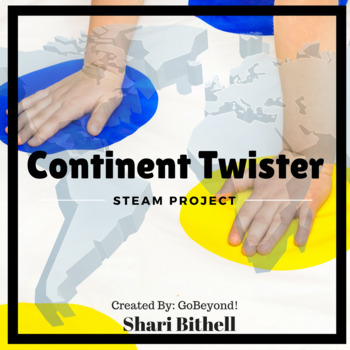STEM / STEAM Mapping and Geography Project
- PDF
Description
This product directly correlates with the elements of a good STEAM project, 21st Century Skills, Next Generation Science Standards, and Project Based Learning. It’s all here, in one fun, interactive activity.
Includes:
→Project Break Down: 7 stages, designed to be easy to follow.
→Teacher’s Notes: These are my thoughts and hard earned lessons from doing this project over the years. You won’t have to reinvent the wheel
→Video Instructions for teachers
→Mapping Skills Video Lesson - Use this with your entire class, for students that missed class when you taught it, to flip your classroom, or as a learning reinforcer to differentiate your instruction
→Maps
→Formative assessment to check for understanding prior to moving on to the map making.
→Student Samples
→Student Checklist
→Grading Rubric
What other teachers are saying
♦What a great way to make children think!!!!
♦This is such a simple, fun activity! I started out the year with my 5th graders completing this in groups. They loved it...especially when they were allowed to remove their shoes and play continental twister in their socks at the end. Thank you for sharing.
♦Using this with my 7th graders right now. They are having a great time creating this game.
♦Cannot wait to use this! I teach high school, and this will be my review/icebreaker next week!
♦Love it! Will be using with a group of 3rd-5th graders. I think this will be fun and a great group learning experience!
★Graphing and Measurement to make and read maps
★Engineering solutions to real world problems
★Problem Solving and Cooperative Group Work
Next Generation Science Standards:
SS.3.A.1.3 Define terms related to the social sciences.
SS.3.G.1.1 Use thematic maps, tables, charts, graphs, and photos to analyze geographic information.
SS.3.G.1.2 Review basic map elements (coordinate grid, cardinal and intermediate directions, title, compass rose, scale, key/legend with symbols) .
SS.3.G.1.3 Label the continents and oceans on a world map.
SS.3.G.1.4 Name and identify the purpose of maps (physical, political, elevation, population).
SS.3.G.1.5 Compare maps and globes to develop an understanding of the concept of distortion.
SS.3.G.1.6 Use maps to identify different types of scale to measure distances between two places.
National Geography Standards:
NSS-G.K-12.1 THE WORLD IN SPATIAL TERMS
Understand how to use maps and other geographic representations, tools, and technologies to acquire, process, and report information from a spatial perspective.
Understand how to use mental maps to organize information about people, places, and environments in a spatial context.
Understand how to analyze the spatial organization of people, places, and environments on Earth's surface.
NSS-G.K-12.2 PLACES AND REGIONS
Understand the physical and human characteristics of places.Common Core Standards Addressed:
Common Core Standards:
4th and 5th Grades:
Chronological & Spatial Thinking
4. Students use map and globe skills to determine the absolute locations of places and interpret information available through a map's or globe's legend, scale, and symbolic representations.
6th Grade:
Chronological & Spatial Thinking
3. Students use a variety of maps and documents to identify physical and cultural features of neighborhoods, cities, states, and countries and to explain the historical migration of people, expansion and disintegration of empires, and the growth of economic systems.
Grades 6 thru 8:
Integration of Knowledge and Ideas
7. Integrate visual information (e.g., in charts, graphs, photographs, videos, or maps) with other information in print and digital texts.
Presentation of Knowledge and Ideas:
5. Integrate multimedia and visual displays into presentations to clarify information, strengthen claims and evidence, and add interest.
Shari Bithell





